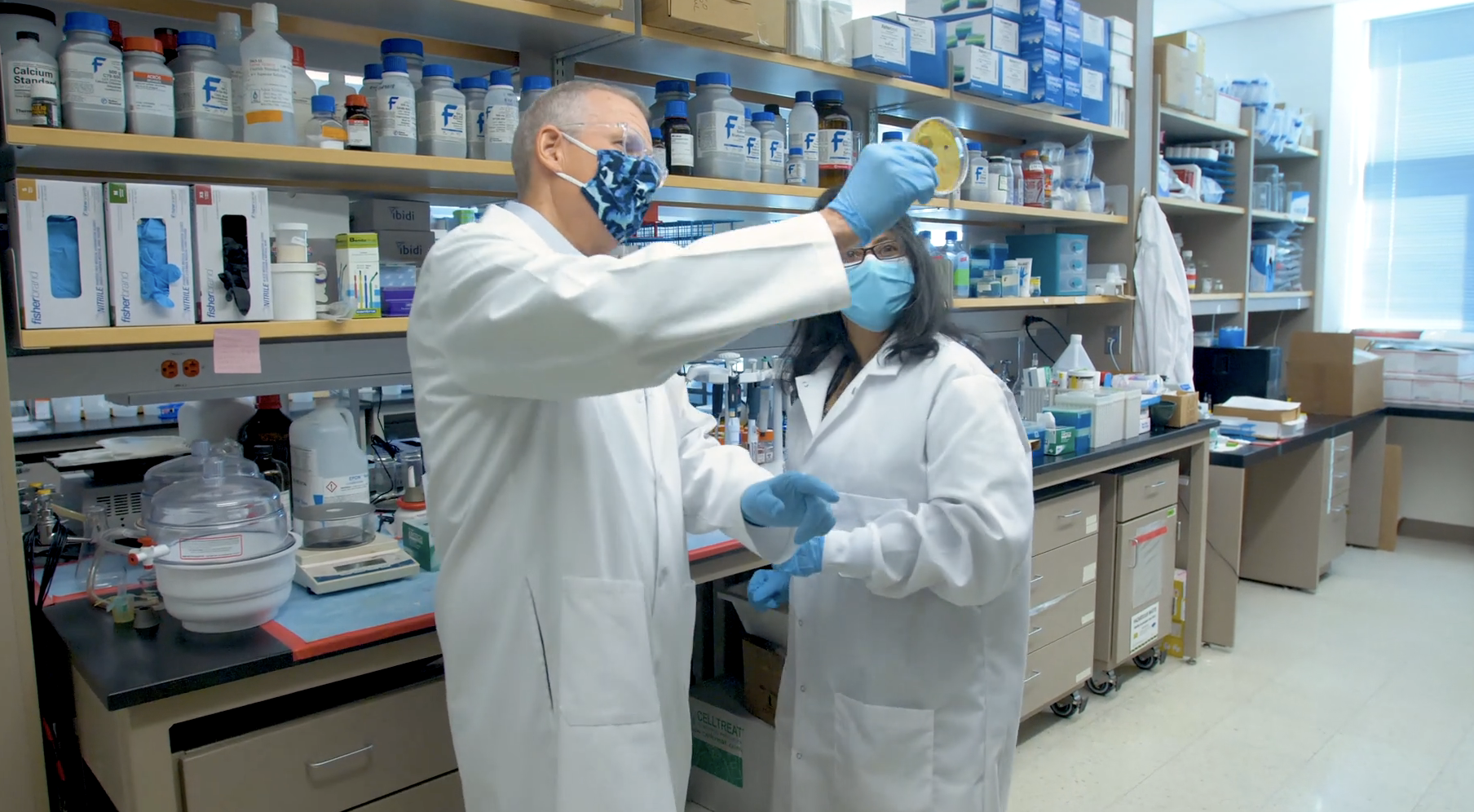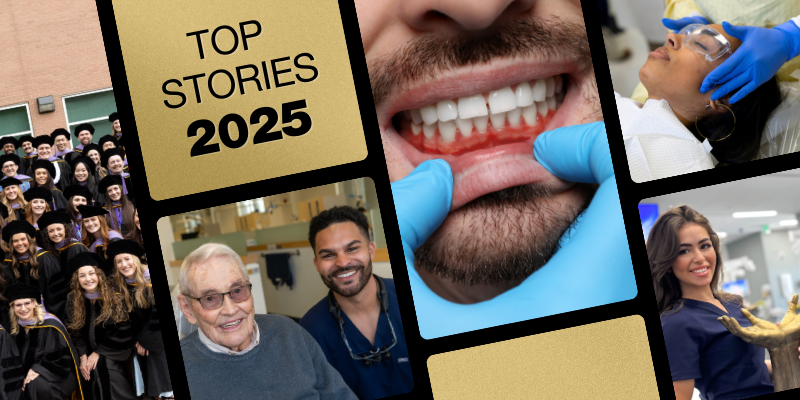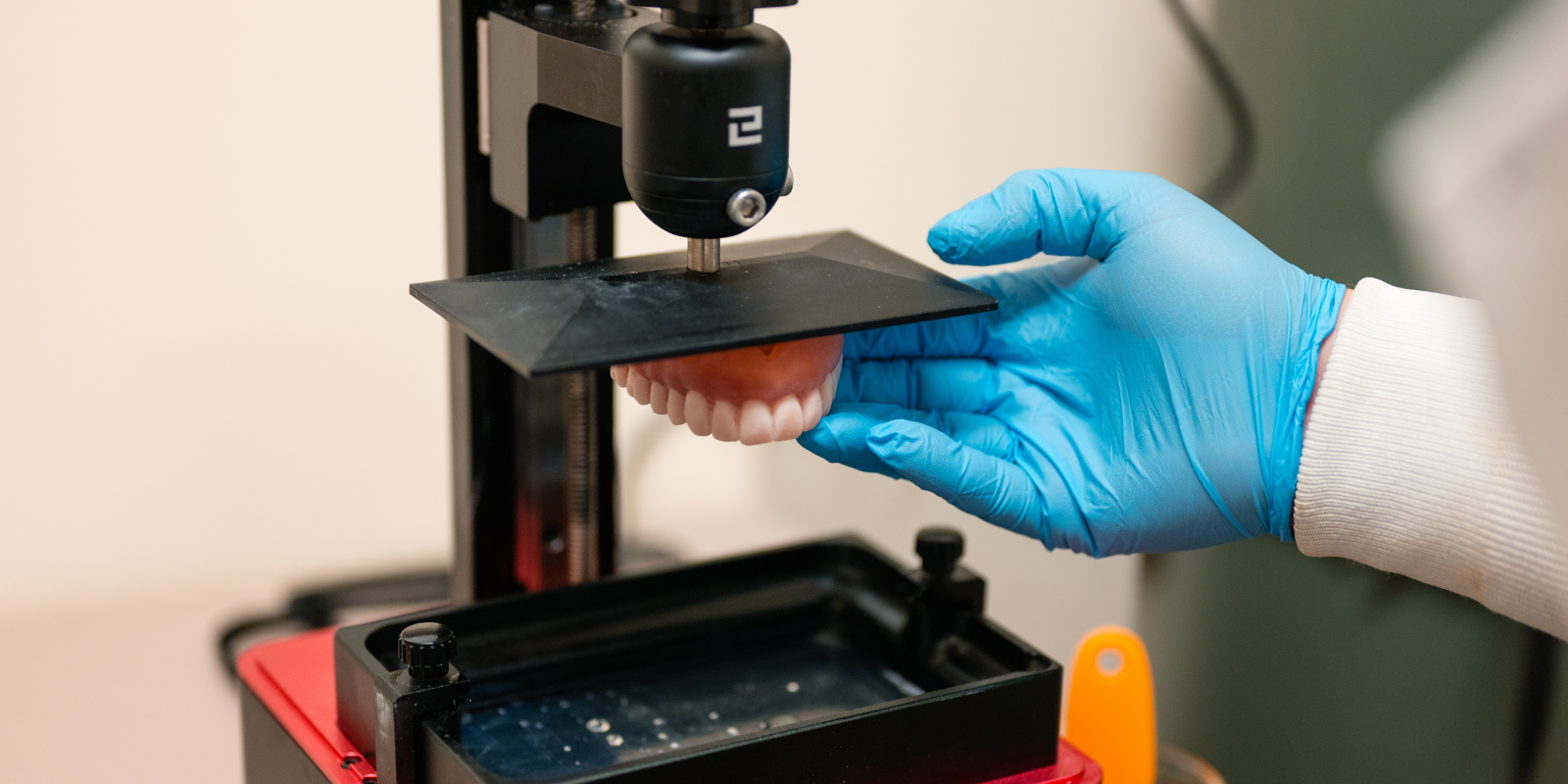A CU Dental trio nicknamed as the “Dream Team.” Of course, they are not to be confused with the 1992 U.S. Olympic basketball team of legends, like Larry Bird, Charles Barkley, Magic Johnson, or Michael Jordan. The researchers’ “court” is in the lab.
Their discoveries and hard work have paid off, creating something that even they couldn’t believe, an impressive defensive strategy: a dental coating that inhibits bacteria that causes dental cavities. It also sheds bacterial biofilms and helps regenerate dental pulp that houses the connective tissue, blood vessels, and cells in the center of the tooth. This discovery will have a large impact as nearly half of the world’s population experience dental cavities.
The novel coating material that was developed at CU is made from acrylated hydroxyazobenzenes (AHA). While it doesn’t necessarily roll off the tongue, it does help keep the oral cavity clean.
“We have created a genus-specific antibiotic that does not exist in medicine or dentistry,” shared Mike Schurr, PhD, associate professor of Immunology and Microbiology.
The impressive development has also caught the attention of the National Institutes of Health and the Gates Grubstake Fund who recently awarded the team $350,000 to continue their research.
The CU Anschutz trio who has come up with this discovery include:
• Devatha Nair, PhD, assistant professor in the Department of Craniofacial Biology;
• Mike Schurr, PhD, associate professor of Immunology and Microbiology; and
• Chaitanya Puranik, PhD, MDS, MS, BDS, clinical assistant professor in Pediatric Dentistry.
“It’s not too often that you have a microbiologist, a dentist, and a material scientist working together,” said Schurr. “It’s an incredibly versatile team.” Each member brings a unique perspective to the research given their different medical and dental specialties.
The team discovered that when the AHA dental coating was applied to the tooth, the coating killed cavity-causing bacteria. All traditional dental cleaning products such as mouthwashes may kill few bacteria, but the dead bacteria remain.
“We designed the material such that when it interacts with light, it moves at the molecular level to disperse biofilms and inhibit bacterial attachment,” said Nair. “The unexpected aspect of the material was its ability to selectively inhibit dental-caries causing bacteria and its regenerative potential in dentistry.”
The team thinks that their novel innovation, the AHA, will be a paradigm shift in the practice of dentistry.
“There is not a single dental material in dentistry that is this versatile; AHA, is an exception,” said Puranik. “While preventing dental caries and dispersing biofilm, it has the potential to be used as a filling material that can be placed directly in dental pulp to initiate formation of dentinal ridge. This itself is highly rare for any filling material in dentistry.”
The AHA coating has other advantages over current dental materials such as low-cost, no internal staining or tooth resorption, and ease of application with fewer steps, which reduces chairside time. In addition, AHA prevents the formation of dental plaque and secondary cavities around existing fillings. The icing on the cake is, it’s dental pulp regenerative potential.
The “Dream Team” is committed to continue their research and work with CU Innovations to explore wider potential for application of AHA coating. The researchers shared that this coating has more potentials in the field of dentistry and medicine—for instance, preventing strep throat because of the way it kills off bacteria. They are also exploring the application of AHA coating for cleaning and sterilization of endoscopes and catheters.



